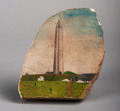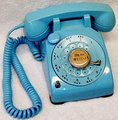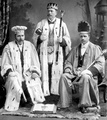This article, written by the curator of the James Arthur Collection of Clocks and Watches at New York University, discusses clockmaking in the 18th and 19th centuries, noting the rise and fall of the independent clockmaker, the movement away from quality items to clocks that could be sold cheaply, and the differences between public and domestic clocks. It originally appeared in the November 1937 issue of American Collector magazine, a publication which ran from 1933-1948 and served antique collectors and dealers.
To be a horologist a man had to know both the science and the art of timekeeping; to be a clockmaker he had to be a skillful mechanic. From time to time a completely rounded man in science, art and handicraft appeared, such as Tompion, Graham, Harrison in England; LeRoy, Berthoud, Breguet in France; Ramsay, Reid, Smith in Scotland; Huygens in Holland; and Rittenhouse in America. In lesser degree there were many in America as well as elsewhere of measurable ability.

Made at York, Pa.: It is the work of an unknown maker about 1800. It has a one-day movement. Case is cherry but glass in lower door a later alteration. Face beautifully decorated with floral paintings.
In America we can cite examples that will show a wide distribution of such craftsmen and an interweaving of their output in a pattern that was spread over a broad territory. In clock lore as in that of furniture making and other industrial arts, certain names are so outstanding as to have become household words.
Especially was this the case in the New England colonies where the fame of their clockmakers eventually rose to such a height as to produce the impression in later times that little ability or activity in that line was manifested anywhere else. But before the end of the 18th Century skillful clockmakers in other colonies had been producing their wares and acquiring a reputation. This was more marked in the Middle States and Maryland than in the colonies along the sea coast of the South.
A clock was one of the few things not brought over in the Mayflower. If there was a clockmaker among the passengers he had no means of practicing his art except by importation of materials from Europe. Lack of mechanical facilities in America and high cost of materials for metal clocks, which had to be imported, drove would-be clockmakers of America to the production of wooden movements. These, however, were not attempted until the colonies had been growing for a hundred years and the compulsion under which they were made continued from about 1770 until about 1820.
During this time these clocks were made almost entirely by hand and it is those only that can claim any attraction today as antiques. Toward the end of this period, with the aid of machinery that had then become available, wooden clocks were produced in such number and were so widely distributed that a wooden movement cannot now indicate either rarity or antiquity unless its date or maker is known.
Handmade clocks, even those cheaper ones with wooden movements, were expensive and people who could afford to buy one could also afford to pay for an attractive case for it, and the long case or so-called “grandfather” clock became a prized piece of household furniture.
Clockmaking as an industry related entirely to domestic clocks. Public clocks were installed by individual makers who, in many instances, carried on in a comparatively small way. Local makers of recognized ability constructed tower clocks to be installed in a town hall, a church steeple, or some public building in many of the thrifty New England cities, towns or villages, and also, though less commonly, in other sections of the country. Some of these clocks survive; others have been replaced by later ones.
When an artisan built a public clock it was an important item in his own history and in the history of the place for which it was made. A clock of that nature was likely to be a chef d’oeuvre of its maker whose subsequent fame rested entirely upon that one work. For example, Ebenezer Parmele, of Guilford, Connecticut, made a public clock for the Meeting House of the Guilford church. It was installed there by him December 15, 1741. According to Penrose R. Hoopes in Connecticut Clockmakers of the Eighteenth Century “this Guilford Clock was the first steeple clock setup in Connecticut. Its maker was a thoroughly trained and skillful clockmaker, but no examples of domestic clocks made by Parmele have been found.”
A similar comment applies to an interesting public clock now in operation in the Smithsonian Institution, Washington, D. C. Of this the Associate Director of the Smithsonian writes:

By Benjamin Willard: Made about 1775 at Roxbury, Mass., by the eldest of the four Willard brothers. Simon, greatest of the Willards, learned his trade from Benjamin.
“The clock movement was installed in the tower of Trinity Chapel, Evangelical Reformed Church, Frederick, Maryland in 1796-97. It was made there by Frederick Heisley. It was paid for by public subscription and was known as the Town Clock. It was removed about 1928 and replaced by an electric movement…It is a weight-driven, pin escapement, hourstrike movement with a fourteen-feet pendulum with wooden rod and cast-iron bob. The frame is of hand-wrought iron, the wheels of brass, the drums of wood, and the weights cast-iron.”
Evidently this clock did duty faithfully on its original site for more than 100 years and, yet, so far as I know, no other clock by this maker is on record.
Mrs. N. Hudson Moore says in The Old Clock Book that “a Mr. Avery made a clock for the Old North Church (of Paul Revere fame).” This clock still does good service (for a private owner), but no other clocks by this Mr. Avery are mentioned.
“Willard,” “Terry,” and a good many other names suggest clocks to residents of the North Atlantic States who have no knowledge of clockmakers in other sections of the country, but there were makers in other sections, well known to residents there who knew nothing of the New England celebrities. Among such examples were the Fessler clocks in Maryland. John Fessler, Sr., learned the art of clockmaking in Germany or Switzerland and came to America some time after 1750, settling in Lancaster, Pa. After serving in the Revolutionary War he moved to “Fredericktown” (now Frederick), Md., and established a business of making clocks. They are much in demand by collectors, especially in his local territory of Western Maryland. He died in 1820.
One of the best authenticated and most fully recorded of early American clocks, with peregrinations and successive sojourns in three states is an example of a practice that was common with clocks of that kind and that period. The movement complete, without a case, would be placed on a shelf or bracket or could be hung up against the wall. As thus suspended it was, to all intents and purposes, a wag-on-the-wall but if the owner wanted a case for it he would have one made to suit his taste or his purse by a cabinetmaker in his own neighborhood.
Such a clock was made by Jacob Hostetter of Hanover, Pa., in 1802, for Henry Hering who, with his father, had come to America from Switzerland some ten or twelve years earlier and settled in Frederick County, Md. While the case is not especially artistic it is of good style and well made, but the name of the cabinetmaker is not known; it is doubtful whether he ever heard of Chippendale or Sheraton, and Duncan Phyfe’s star was just rising.
This clock has celebrated its centennial and is staunchly moving on to its sesquicentennial-movement made in Pennsylvania in 1802; case then made and clock installed in Maryland, where it operated for 70 years; transferred to Waynesboro, Pa., in 1872; and seven years later taken to Virginia where, through vicissitudes of storm and stress, of fire and flood, it has continued its career up to the present time. For 15 years I enjoyed the music of its matchless bell and, as a boy, delighted in seeing my father perform the Saturday winding of it. It is now the property of Robert Hering in Harrisonburg, Va., a great-great-great-grandson of its original owner, having come to him in direct lineal descent through four generations.
Following the success of the American Revolution, the spirit of America became essentially democratic, and for popular service as a timekeeper as well as for large sales, it became more important to make a cheap clock than to make a good one.
The Willards with their hang-up timepieces, the Terrys, Jeromes, Seth Thomas and others with their shelf clocks did endeavor to some extent to combine quality with cheapness, but with little success until the introduction of machinery. As this was not considerable outside of New England, the patronage of villages and communities in other parts of the country still went for a while to independent clockmakers.
While no precise date can be said to mark the displacement of the independent clockmaker, he passed out rapidly after 1825. In a total of 1260 clockmaking enterprises listed by Wallace Nutting, 734 were names of individuals and firms in operation before 1825. Some of these were repetitions because of firms reorganized from time to time, but after some sifting there are 685 individuals named with dates. Some without date were doubtless earlier than 1825, but if they were included, the relative numbers from different sections would probably not be greatly altered.

By John Fessler: He worked in Frederick, Md., about 1790. This clock is now in the collection of Mrs. Frary Z. Miller.
In the complete list prior to 1825, Pennsylvania leads with 194; Massachusetts is second, with 151; then comes New York, with 122; Connecticut had 119; Rhode Island, 41; Maryland, 40; New Hampshire, 23; Delaware, 14; Maine, 12; Vermont had 3; New Jersey and Virginia, 2 each; and only one each is named for North Carolina, South Carolina, and Ohio.
In fact the figures follow the different sections of the country according to their commercial and manufacturing importance rather than their population, the southern states being chiefly agricultural; yet it is a little surprising to find that over 300 or nearly half of the entire number of these expert mechanics were practicing their art south of New England.
Only when the inventive talent of the New Englanders devised the necessary machinery for cheap mass production and their business acumen developed markets for their products did clockmaking become a large industry that was focused in Connecticut, and Connecticut and clockmaking became synonymous. The business actually became epidemic. In a pamphlet entitled Timepieces of Old and New Connecticut, Anna B. Sands says, “In the year 1857 in Bristol alone there were over sixty clock manufacturing concerns.”
Boston, Providence, New York, Philadelphia, Baltimore were the principal commercial and industrial centers, with Newport, New Haven, and Wilmington, Del., also as points of activity, and business enterprises naturally throve best in their vicinity; but Pennsylvania was the “keystone” of the colonial arch and New York had not yet wrested municipal supremacy from Philadelphia. Inland traffic was stimulated by the westward tide of migration which was greatest through Pennsylvania, and among fertile farms a chain of towns arose embracing York, Lancaster, Hanover, Gettysburg, Chambersburg, Carlisle, Harrisburg and on, across the Alleghanies to Pittsburgh and reaching over into Ohio.
This article originally appeared in American Collector magazine, a publication which ran from 1933-1948 and served antique collectors and dealers.
 The Relic Hunters Who Saved American History
The Relic Hunters Who Saved American History Naughty Nuns, Flatulent Monks, and Other Surprises of Sacred Medieval Manuscripts
Naughty Nuns, Flatulent Monks, and Other Surprises of Sacred Medieval Manuscripts Antique Telephone Collector Gary Goff Talks Candlesticks and Desk Sets
Antique Telephone Collector Gary Goff Talks Candlesticks and Desk Sets Decoding Secret Societies: What Are All Those Old Boys' Clubs Hiding?
Decoding Secret Societies: What Are All Those Old Boys' Clubs Hiding? Traveling the World Via Vintage Skirts
Traveling the World Via Vintage Skirts ClocksThink of antique clocks, and a stately grandfather, German cuckoo, or Art D…
ClocksThink of antique clocks, and a stately grandfather, German cuckoo, or Art D… Mari Tepper: Laying it on the Line
Mari Tepper: Laying it on the Line Nice Ice: Valerie Hammond on the Genteel Charm of Vintage Canadian Costume Jewelry
Nice Ice: Valerie Hammond on the Genteel Charm of Vintage Canadian Costume Jewelry How Jim Heimann Got Crazy for California Architecture
How Jim Heimann Got Crazy for California Architecture Modernist Man: Jock Peters May Be the Most Influential Architect You've Never Heard Of
Modernist Man: Jock Peters May Be the Most Influential Architect You've Never Heard Of Meet Cute: Were Kokeshi Dolls the Models for Hello Kitty, Pokemon, and Be@rbrick?
Meet Cute: Were Kokeshi Dolls the Models for Hello Kitty, Pokemon, and Be@rbrick? When the King of Comedy Posters Set His Surreal Sights on the World of Rock 'n' Roll
When the King of Comedy Posters Set His Surreal Sights on the World of Rock 'n' Roll How One Artist Makes New Art From Old Coloring Books and Found Photos
How One Artist Makes New Art From Old Coloring Books and Found Photos Say Cheese! How Bad Photography Has Changed Our Definition of Good Pictures
Say Cheese! How Bad Photography Has Changed Our Definition of Good Pictures Middle Earthenware: One Family's Quest to Reclaim Its Place in British Pottery History
Middle Earthenware: One Family's Quest to Reclaim Its Place in British Pottery History Fancy Fowl: How an Evil Sea Captain and a Beloved Queen Made the World Crave KFC
Fancy Fowl: How an Evil Sea Captain and a Beloved Queen Made the World Crave KFC
This is one of the most complete and informative articles on clockmaking I have read. Thank you for the article.
acquired a grandfather clock made of yellow pine dated Awst x,1775 or August 10,1775 made in Rhode Island name appears to be Robert James…..Beautiful simple Shaker type lines about 7 feet tall………..Any thoughts on the maker and from where in Rhode Island???????? Trying to SAVE history…….Thanks, Dave
I have a grandfather clock inherited as the oldest son and am the 5th or 6th generation to own it. It has Osborne works and I believe an American case. Is there any way to date it by the painting on the face plate? Also which American clock makers used Osborne works?
Torrey Foster
We have a John Fessler tall case clock acquired by my grandfather in the early 1940’s. We have the name of the previous owner and where he lived. We are curious as to whether John Fessler, Sr. or Jr. was the clockmaker. One clue is that the weights used were old pieces of scrap metal. It is my understanding that before 1820 the weights used were either of wood or old pieces of metal, whereas after 1820 weights were manufatured? Our clock does have the name John Fessler, Fredericktown on the clock face. It is in perfect condition and has been cared for beautifully in all of the years that we have had it in our family (in Frederick, Md.). Thank you.
We have a Fessler – though the name is spelled “John Feisler – Frederick Town” on the face. Father or son, we’re not certain, but believe the son stopped making clocks around 1850. The clock has come down to me through my family, originally located in the Hancock/Hagerstown areas of Maryland. Though not interested in selling the piece, I am interested in its value for insurance purposes. Any help you can give me in that regard is appreciated.
Also for insurance purposes – We have an unsigned white dial tall case clock loosely attributed by Ed LaFond to Frederick Heisely. It has dead beat escapement and a red date hand pointing day’s date. Case has SIX finials ! and is cherry with mahogany banding at case’s waist door. French feet, and thought to be “Germanic”, possibly York PA, Harrisburg PA or other contemporaries of Frederick Heisely’s. Sorry no image available at this writing. Clock is in Wilmington DE having been purchased in 1997 at the Delaware Antique Show from Mr Price of Carlisle PA. I am a Senior Guide Specialist at Winterthur Museum. Thank you.
This site is very informative because our Historical Society in Hanover PA is
going to have a demonstration on caring and repairing our Hostetter tall clock.
We have acquired several early Hanover clocks and our April program will be
of interest to collectors and owners of rare and fragile masterpieces. Thank You.
I believe it to be pre 1775 ,jappy freres med cie honouer very beautiful mantle clock ..has feet , something missing from front but above are cherubs n vineyard or garden.large and very heavy has markings carvings..any one know..have the key and pendulum ansom